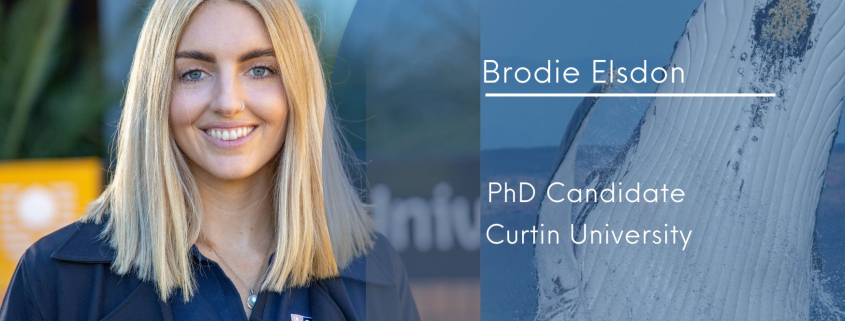Noisy oceans and the threats to the biggest animals on Earth
Blue whales feast on several tonnes of krill a day, accumulate earwax that can be used to determine their age and the species of cetaceans, which are the biggest animals to have ever lived on Earth, have tongues that weigh as much as an elephant.
The fascinating facts were outlined during a presentation by Curtin University PhD candidate Brodie Elsdon as part of the Western Australian Marine Science Institution’s Thinking Blue outreach program.
Ms Elsdon said while the world’s population of humpback whales had recovered well since most countries stopped whaling, blue whales remained endangered globally.
Her presentation, ‘Talking Whales in a Noisy Ocean’ covered her research on whale sounds and song and the noises that pose threats to the animals including shipping.
“We can distinguish between species just by listening to the unique sounds they produce,” Ms Elsdon said.
Her research involves analysing recordings of pygmy blue whales captured from deep-sea areas and canyons around Western Australia, some reaching depths of 4,000 meters.
She then analyses the data using spectrograms, and specialised acoustic algorithms to identify the species’ unique low-frequency, high-intensity vocalisations, which are on the edge of the human hearing threshold.
“By listening to whales sing, vocalise and communicate in a noisy ocean we can identify patterns in their presence and their exposure to threats. It helps us identify the timing and the important locations the whales go, which can play a part in informing improved protection for this iconic, ‘data-deficient’ species.” – Brodie Elsdon
“We know the Perth Canyon is an important feeding area for pygmy blue whales, but it has seen an increase in shipping traffic.”
Ms Elsdon said the ocean soundscape comprised noises caused by animals (biophony), humans (anthropogenic) and noise from the environment (geophony) including wind, rain and breaking sea ice.
“Whales live in an acoustic world and rely on sound for just about every aspect of their life including communicating, finding a mate, hunting for food and navigating,” Ms Elsdon said.
“Unfortunately, they are under increasing pressure from marine industries, habitat degradation and prey depletion.”
Ms Elsdon said her surveys revealed that the Western Australian community places significant value on whales and their conservation. She emphasized this value should be considered in a more holistic approach to managing natural assets, such as pygmy blue whales.
“These marine giants hold immense environmental value through the ecosystem services they provide us and they possess incredible socio-cultural and economic significance.”
“Whales are celebrated in many cultures and societies around the world, and they play a crucial role in maintaining marine ecosystem balance,” Ms Elsdon said.
She told students the ‘blue whale poo’ provided vital nutrients for phytoplankton to grow, which in turn produced about half the world’s oxygen.
Brodie Elsdon is based at Curtin University’s Centre for Marine Science and Technology (CMST).
She completed a marine and environmental science degree at Murdoch University and is co-founder of the Marine Industry Mentoring Network.
You can see the presentation, which includes recordings of different whale species here.

